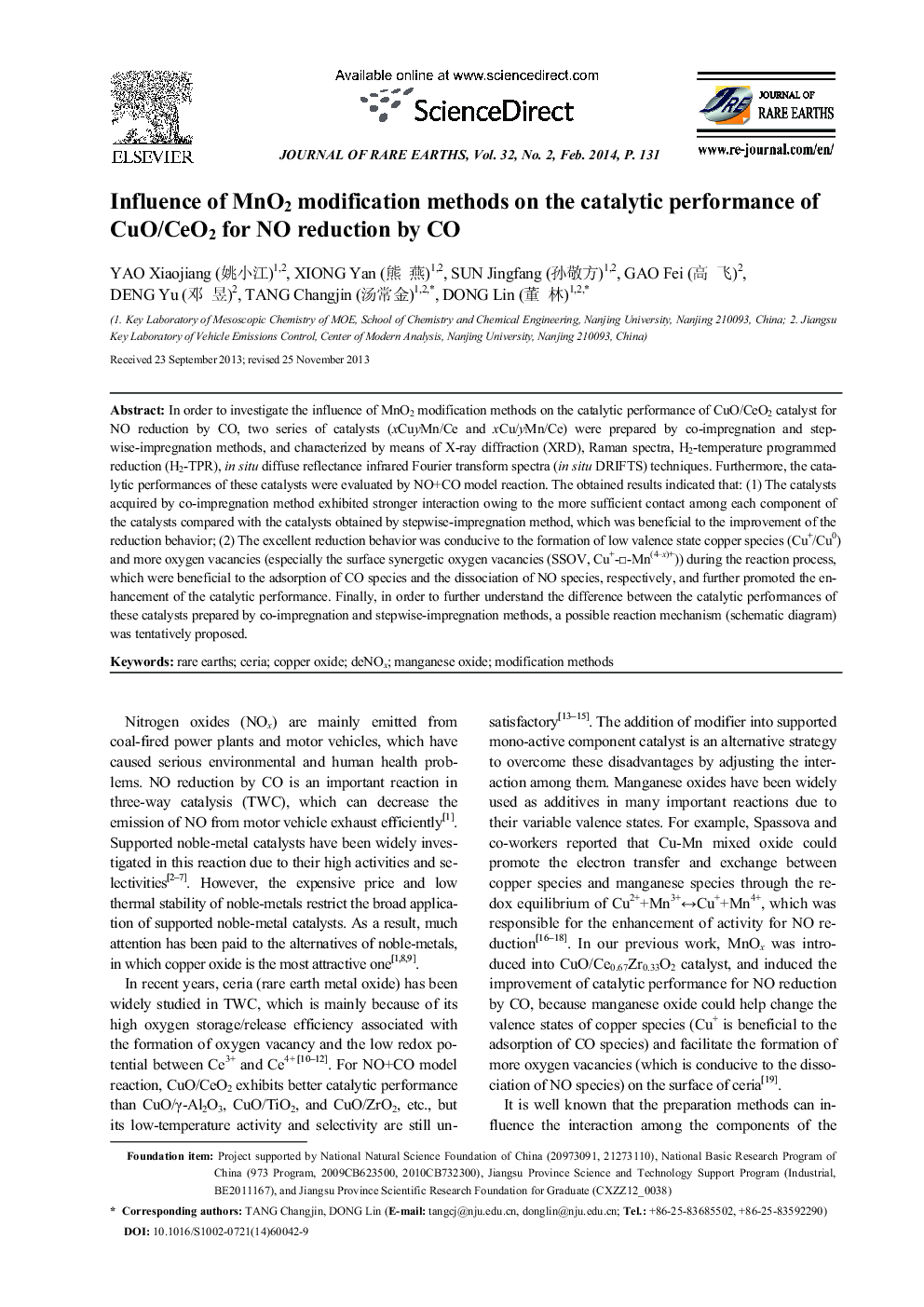| کد مقاله | کد نشریه | سال انتشار | مقاله انگلیسی | نسخه تمام متن |
|---|---|---|---|---|
| 1259570 | 971687 | 2014 | 8 صفحه PDF | دانلود رایگان |

In order to investigate the influence of MnO2 modification methods on the catalytic performance of CuO/CeO2 catalyst for NO reduction by CO, two series of catalysts (xCuyMn/Ce and xCu/yMn/Ce) were prepared by co-impregnation and stepwise-impregnation methods, and characterized by means of X-ray diffraction (XRD), Raman spectra, H2-temperature programmed reduction (H2-TPR), in situ diffuse reflectance infrared Fourier transform spectra (in situ DRIFTS) techniques. Furthermore, the catalytic performances of these catalysts were evaluated by NO+CO model reaction. The obtained results indicated that: (1) The catalysts acquired by co-impregnation method exhibited stronger interaction owing to the more sufficient contact among each component of the catalysts compared with the catalysts obtained by stepwise-impregnation method, which was beneficial to the improvement of the reduction behavior; (2) The excellent reduction behavior was conducive to the formation of low valence state copper species (Cu+/Cu0) and more oxygen vacancies (especially the surface synergetic oxygen vacancies (SSOV, Cu+–Mn(4–x)+)) during the reaction process, which were beneficial to the adsorption of CO species and the dissociation of NO species, respectively, and further promoted the enhancement of the catalytic performance. Finally, in order to further understand the difference between the catalytic performances of these catalysts prepared by co-impregnation and stepwise-impregnation methods, a possible reaction mechanism (schematic diagram) was tentatively proposed.
Compared with stepwise-impregnation method, co-impregnation method is more beneficial to the sufficient contact among each component of the catalysts, which results in the formation of more Cu2+-O-Mn4+ species and better reduction behavior, and further benefits to the generation of more Cu+ species and oxygen vacancies (especially surface synergetic oxygen vacancies (SSOV, Cu+–Mn(4–x)+)) during the reaction process, consequently promotes the enhancement of catalytic performance remarkablyFigure optionsDownload as PowerPoint slide
Journal: Journal of Rare Earths - Volume 32, Issue 2, February 2014, Pages 131–138